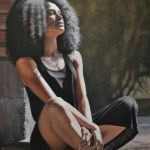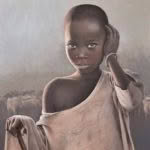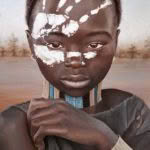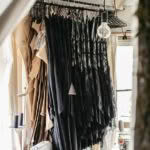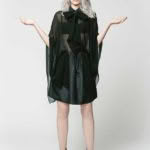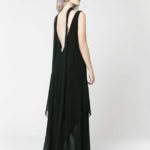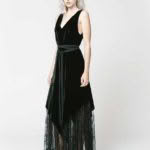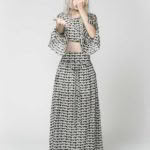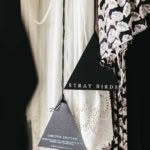Talented young Codlin sisters make world-class art and slow fashion in Picton
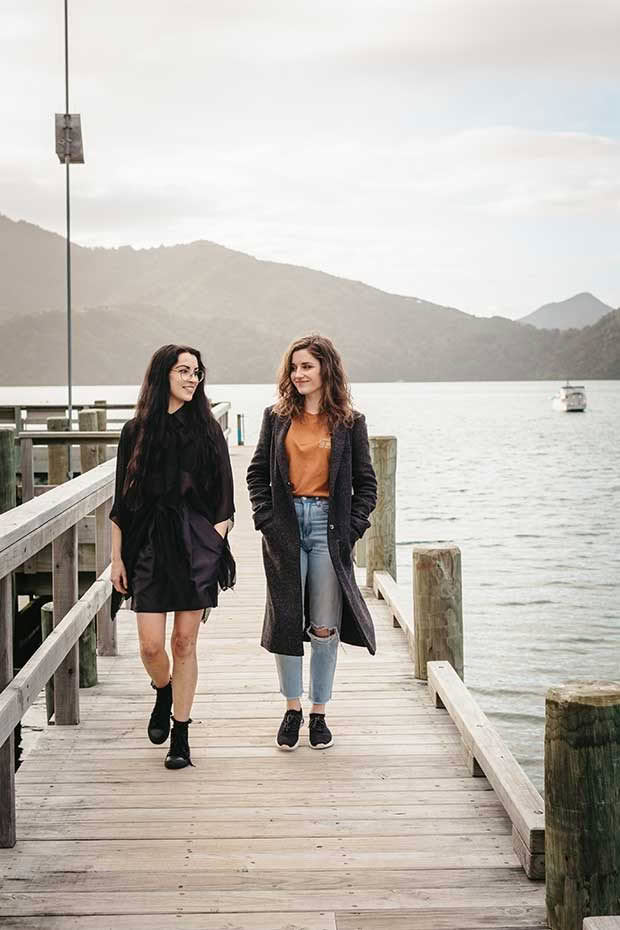
Keeping it in the family, two talented Picton creatives share a love of hand-crafted work with individual pieces that take fierce focus and many hours to make.
Words: Lee-Anne Duncan Photos: Kate Macpherson
For a small space co-habited by two creative people, the studio Sarah and Rebekah Codlin share is surprisingly neat. Sarah’s side is pristine in black and white, with not a thread on the carpeted floor. Rebekah’s paints are tidied, her brushes washed, and a half-completed portrait gazes into the mid-distance.
Fashion designer Sarah (26) and artist Rebekah (24) share a love of creating high-end, slow art, whether that’s in fabrics or oil paint. In October they will also share a pop-up shop in Auckland’s Ponsonby Central where Sarah will officially launch her fashion label to the world, her collection in monochrome and neutrals featured against a backdrop of Rebekah’s large-scale, lifelike oil paintings.
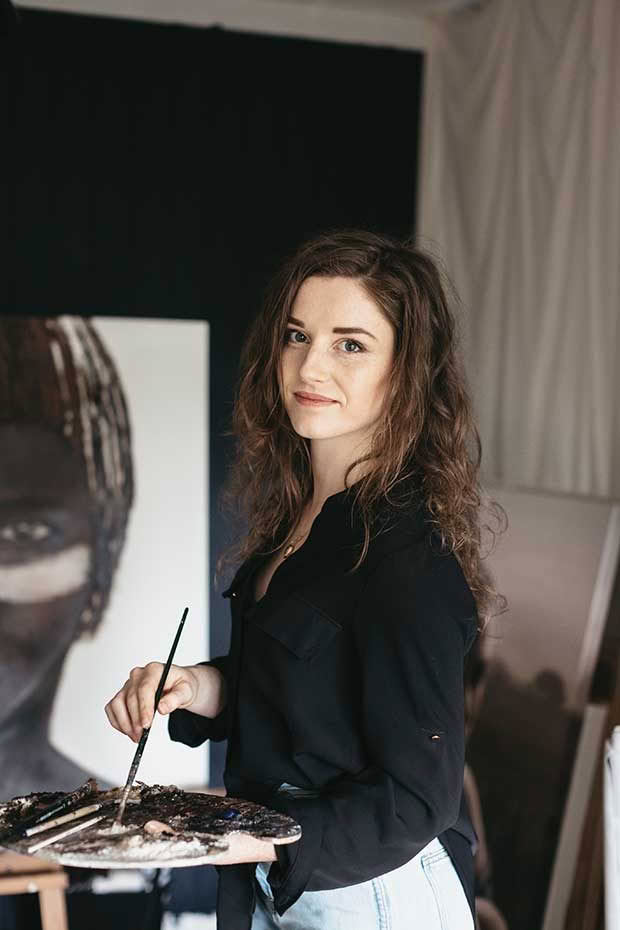
At 24, Rebekah has built up impressive demand for her paintings, and sells internationally (rebekahcodlinart.co.nz). Her subjects include Ethiopian children and people who catch her eye around Marlborough.
“Being an artist or designer is not like having a normal job; we have to work together as a family,” says Rebekah. “We thought it would be cool to highlight that we’re sisters, both creative in our different artistic pursuits. We wanted to do a physical launch of Sarah’s label as her gear is so gorgeous to see, touch and try on. It feels so amazing to wear – the silk is beautiful.”
When Sarah was six months old, her parents Catherine and Paul moved from a farm in Karaka to Ngakuta Bay, a few bays north-west of Picton in the Marlborough Sounds. After 10 years they also bought a house in Picton, living between the two. These days the family, including aged spaniel Fergus, mostly occupy the house in town since both sisters are ferociously busy.
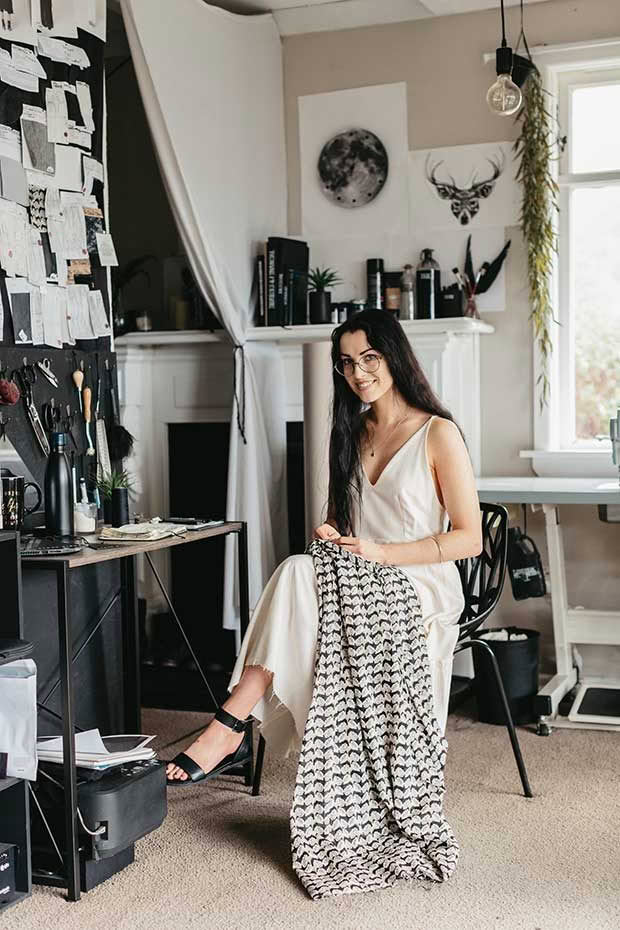
Sarah is launching the first collection for her new label, Stray Birds. The name derives from the title of a book of poetry by Bengali Nobel laureate Rabindranath Tagore, which she spotted in a second-hand store in Havelock. “‘Stray’ sums up what I’m going for: straying from the masses, straying from rigid style. And birds are so free. I knew straight away that was to be my label name.”
Her collection, ‘From the Ether’, is all flowing silk and velvet, ultra-feminine but still strong. Each piece is hand-constructed by Sarah using the Shingo Sato technique, a free-flow way of creating patterns where much of the designing is done on the dressmaker’s model. “I’m really into flattering the figure, to embrace the feminine look, but in a loose way. My designs are something you can dress down, wearing a skivvy underneath and Chuck Taylors, or dress up with heels and full make-up.”
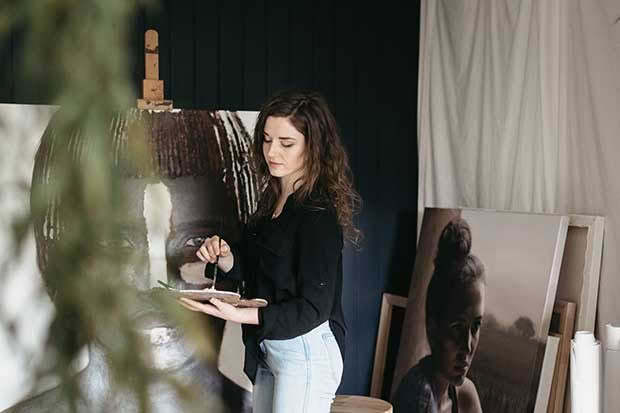
Entirely self-taught, Rebekah has discovered her own ways of conveying texture and life-like detail in her painting. “For the paint on the children’s faces, I’ll patch in the shapes, then I’ll use the skin colour to paint back in cracks where I want the skin to show through. After that I’ll use a larger brush to push the white paint back in around the cracks.
Sarah’s been making clothes since she was four, using what came to hand or modifying store-bought garments. “I’d get a top I liked the shape of and chop it. Then I’d get a pair of pants I liked the fabric of, and undo the seams back and front to make a skirt. Then I’d join it to the top to make a dress.
“As a young girl, I didn’t like generic clothes; I’ve always loved the thrill of being able turn something flat, like a sheet, into something 3D able to be worn and used.”
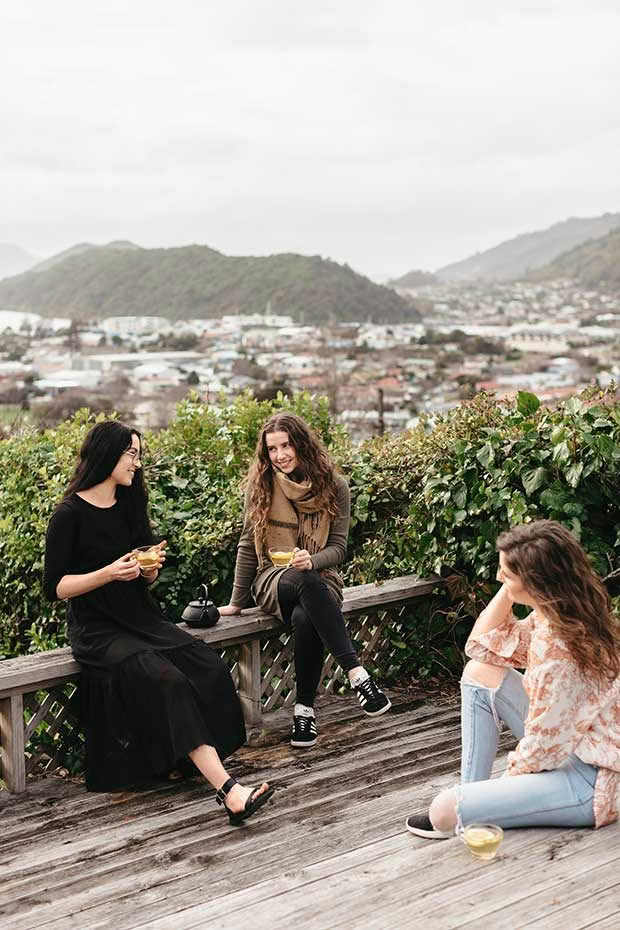
Sarah and Rebekah enjoy tea on their deck in Picton with sister Charlotte, a hip-hop dance teacher and aspiring police recruit.
As a teen Sarah would be stopped on the street by women asking where she bought her clothes. It happened so often she decided to turn her talent into a career.
While Sarah almost completed a fashion degree before a medical issue forced her to stop, Rebekah’s skills are entirely self-taught. She always enjoyed art but became serious at 16 when her then-boss at Le Café on Picton’s waterfront, saw sketches she’d done of other staff. He suggested she display her art at the café. “I painted my first body of large works and from that show became busy with commissions and exhibition requests. I’d been planning to go to university to do something ‘sensible’ like accounting, but my art career took off instead.”
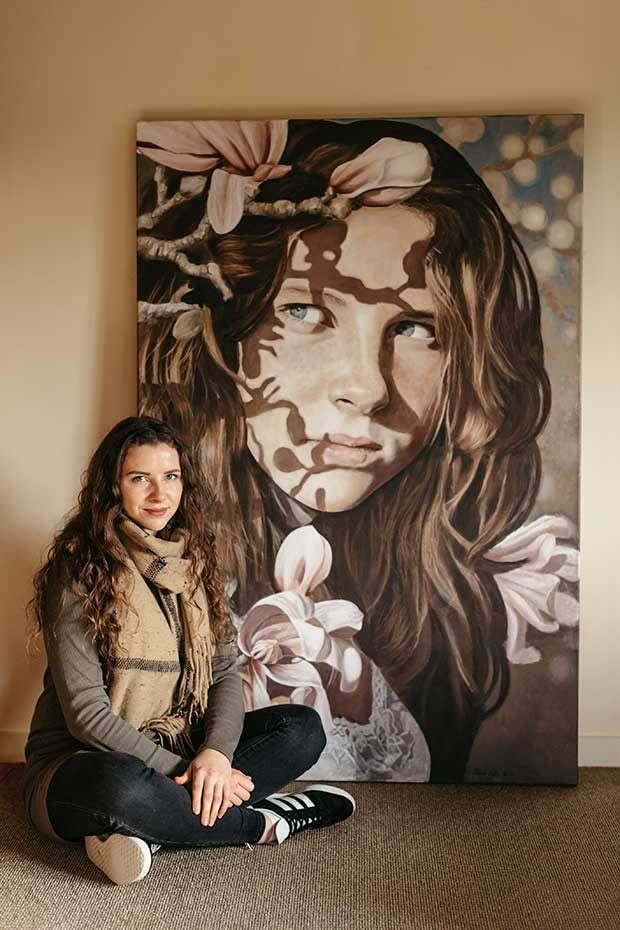
Rebekah painted her sister Charlotte (now 19) when she was 13 and Rebekah only 17.
Rebekah held her first solo exhibition aged 19, and it was then she realized painting could be a living. “I was showing my first proper portrait, and didn’t really want to part with it. The gallery director put $10,000 on it thinking no-one would pay that. On opening night it sold.”
Rebekah’s large-scale oil portraits and giclée prints are now in demand locally and overseas, especially Australia and the USA. She’s just shipped several oil paintings to a gallery she’s signed to in Santa Fe, a destination city for art buyers. The Santa Fe connection was made when the family holidayed in Hawai’i and met the gallery owner’s son.
- Rebekah first saw Charlie [pictured top right] on the streets of Picton. “Her hair was fascinating, although really hard to paint.”
“I’ve had a lot of positive feedback from Americans, and because it’s a big country there’s a huge pool of people who like my kind of art.” Rebekah’s kind of art is super realistic. The viewer can pick out the reflection in her subjects’ eyes, count every strand of hair, trace each crease on their clothes.
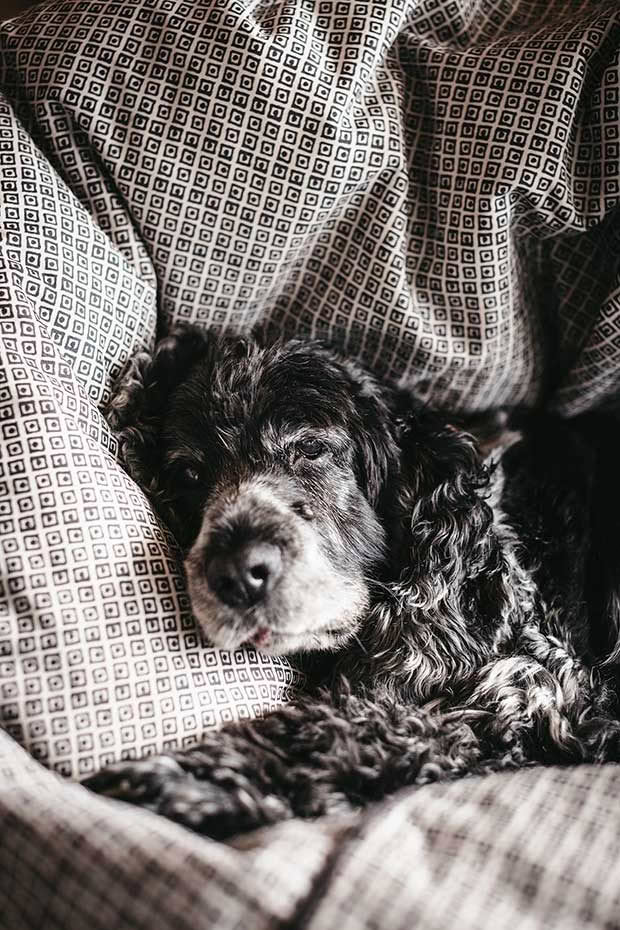
Even Fergus, the elderly family spaniel, is in keeping with the predominant black/white theme.
“I like to capture a warmth and connection with the viewer. I like my portraits to uplift those who look at them. I love realism because I feel it’s easier to get that connection. It’s very satisfying to paint – getting the light and the details right. I work hard to make the colours harmonious and the background to emphasize the person.”

‘From the Ether’, will be the debut collection of Sarah’s Stray Birds label (straybirds.nz). The 26-year-old uses silks and georgette to create a feminine style that’s “whimsical and ethereal, without being prissy”. The label – each piece hand-made by Sarah – will launch at Ponsonby Central in Auckland, October 22-Nov 5. As a young girl, Sarah hand-sewed everything; her mother believes it made her fingers strong and dexterous to handle the slippery silks she favours.
Her subjects are often folk she meets around Picton which, as a tourist spot, attracts people from all over. “I look for interesting faces, an expression I like, someone with a face that’s a bit sculptural.” After sussing them out from afar, Rebekah makes an approach. “It’s weird to go up to them and tell them I’d like to paint them, but they’re almost always excited to sit.”
She starts by getting to know her subject and taking some photos, although she often recreates the background, clothing and even her sitter’s expression to achieve exactly what she wants. Working eight hours a day, six days a week, hopefully about a month later the portrait is finished. “It’s freaky to spend so long working on something, just crossing your fingers that someone will like it,” she says. Luckily, art buyers do.
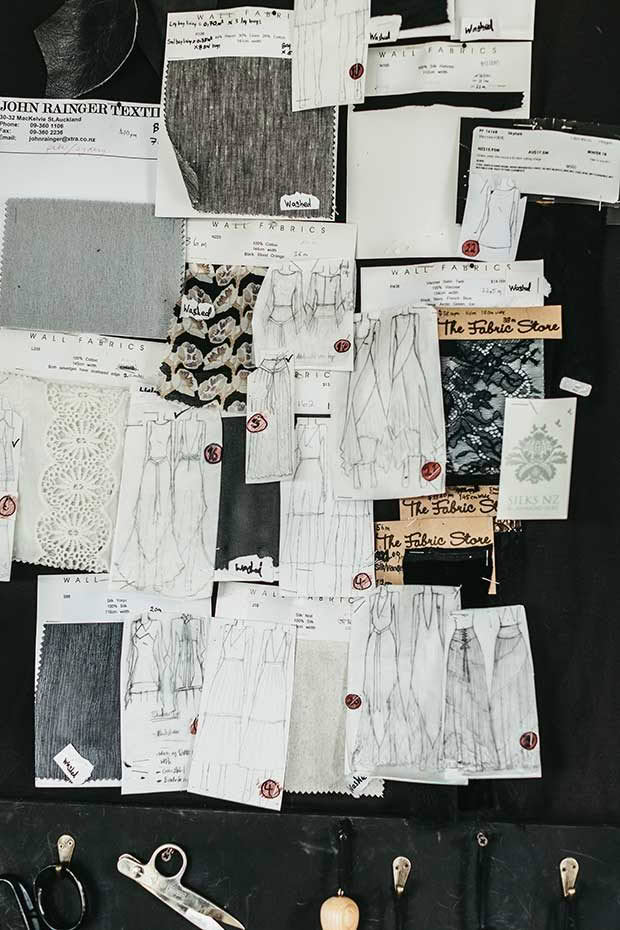
Sarah and Rebekah’s parents can’t pinpoint the source of their daughters’ talents, but partly attribute it to their decision to homeschool via The Correspondence School (Te Kura). “We learnt to get our schoolwork done so we could focus on other interests, like dance, guitar and art, making bush huts and going swimming,” says Rebekah.

“I managed my time so I could do my sewing because I loved it,” says Sarah. “I wasn’t thinking about my career, I was thinking about how much I loved making clothes.” Which is not to say their schoolwork suffered; all four children including brother Christopher (22) and sister Charlotte (19) achieved University Entrance and NCEA Level 3. Neither sister sees any disadvantage to artistic life in a small town, a lack of easy access to fabrics for Sarah notwithstanding. “It’s lovely to live in a place that’s so serene when you’re doing something that’s quite difficult,” says Sarah. “It’s really nice to have that balance.”
FABRIC FINDER

Sarah Codlin’s face lights up when she talks about her love of fabric. “I look at it and it speaks to me. It’s all about the possibilities.” Living in Picton generally means traveling to find fabric. When she was young, a family trip to Nelson necessitated an expedition to Spotlight. Now she’s more likely to go to Auckland to find what she wants for her Stray Birds garments. “I need to see the colours in real life. I’m extremely picky so I need to feel the fabric, to see how it falls and how it feels on my skin. Would I like to wear it? Is it breathable? I need to get a true sense of it, also to get an idea of how it’s going to make up into a garment.”
Once these fabrics are chosen – natural fibres wherever possible – Sarah sketches her designs on paper, then uses a variety of pattern-drafting techniques, depending on the garment’s design. This includes a Japanese technique called Shingo Sato, which is a way to convert conventional darts into free-flowing artistic panels that give the appearance of no rigid construction. Sarah also might mix conventional pattern-drafting with draping: after pattern drafting, she makes a prototype and makes further adjustments on the mannequin to achieve the most flattering cut. Final design touches include full silk linings and French seams.
CHANCE TO DANCE

Sarah and Rebekah’s love of the arts was always given full support. “At one stage we were driving to Blenheim four nights a week to dancing, music lessons and gymnastics,” says mum Catherine. Sarah was a representative gymnast before taking up jazz ballet. Rebekah started with Scottish Highland dancing, moving to hip-hop then Latin dance styles. While Sarah’s current “manufacturing mode” means she has little time to dance, Rebekah still heads down to a local studio to do salsa or zouk most nights after her nine-hour painting day. Brazilian zouk is a partner-led freestyle dance with its roots in the popular 80s dance, lambada.

Before painting took over, Rebekah taught guitar to 40 students a week, and set up Street Dance Federation with her police recruit-aspirant sister Charlotte. The not-for-profit hip-hop school has provided backing dancers to New Zealand musicians. “We got to choreograph pieces for TrinityRoots, The Black Seeds and Tiki Taane for the Sweet Az Sun Festival in 2016. It was fantastic to be able to give our students such great opportunities.”
Love this story? Subscribe now!
 This article first appeared in NZ Life & Leisure Magazine.
This article first appeared in NZ Life & Leisure Magazine.
